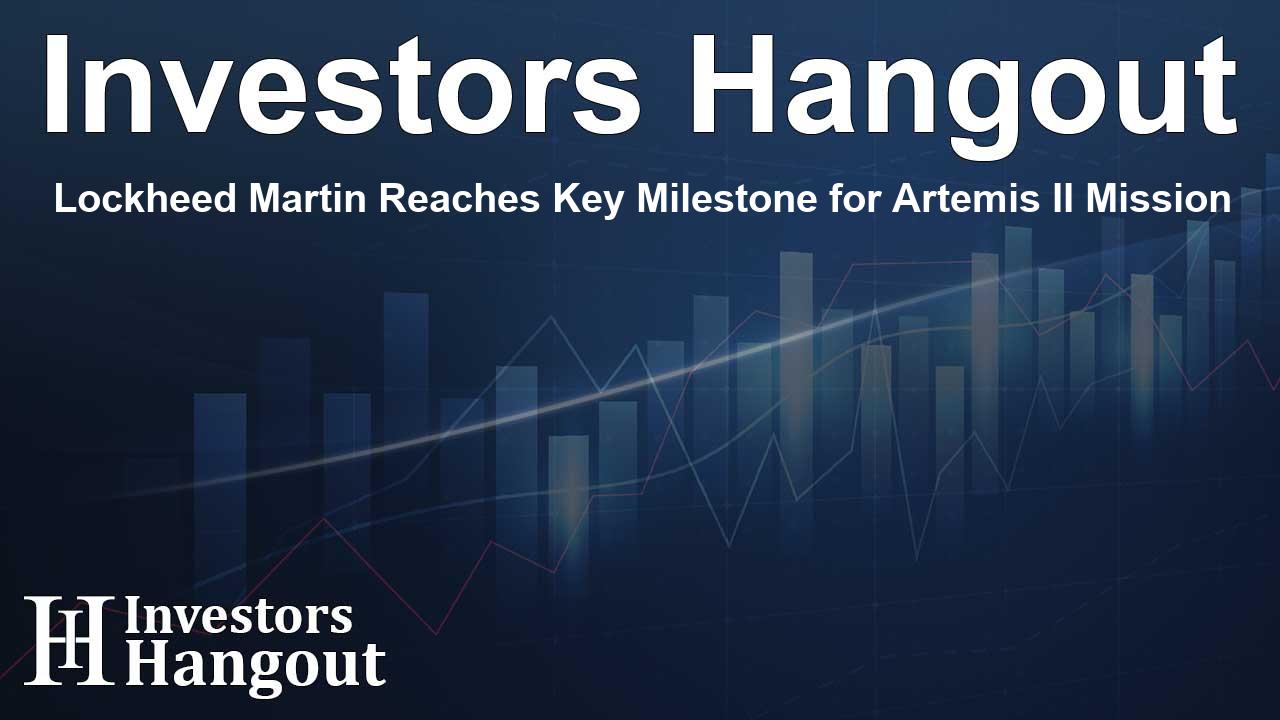Lockheed Martin Reaches Key Milestone for Artemis II Mission

Lockheed Martin Completes Orion Development for Artemis II
Upgraded Spacecraft Delivered, Preparations for Launch Underway
Lockheed Martin [NYSE: LMT] has successfully finalized the assembly and testing phases of NASA's Orion Artemis II spacecraft. This journey culminated in the formal transfer of the spacecraft to NASA's Exploration Ground Systems (EGS) team. This represents a notable achievement for both NASA and its Artemis program collaborators as they gear up for a groundbreaking launch involving a crew of four astronauts. The goal is to enhance the agency's presence on the Moon, which will serve as a foundation for future crewed missions, including potential endeavors toward Mars.
The Orion Spacecraft: A New Era of Exploration
Orion stands as the most sophisticated, human-rated spacecraft crafted for deep space exploration to date. As NASA’s primary contractor for the Orion program, Lockheed Martin has developed not only the crew module but also crucial systems like the crew module adaptor and the launch abort system.
"This remarkable accomplishment reflects the dedication of our skilled employees and suppliers who have worked persistently to achieve this significant milestone," stated Kirk Shireman, vice president of Human Space Exploration and Orion program manager at Lockheed Martin. He expressed enthusiasm about the exciting possibilities, noting that soon humans will witness Earth rising over the lunar horizon from within the Orion vehicle, all while venturing further into space than ever before.
Upgrades for the Artemis II Crew
The Orion spacecraft prepared for Artemis II includes numerous enhancements based on invaluable experiences gathered from previous missions, such as the uncrewed Exploration Flight Test 1 (EFT-1) and the Artemis I missions. Artemis II will carry a crew to conduct critical evaluations of the spacecraft under deep space conditions.
This mission will also serve as an important testing ground for new systems designed for crew safety and comfort. Among these upgrades are improved life support systems for air, water, and waste management; audio communication setups; and an exercise machine to keep the crew physically fit during their journey. Furthermore, a robust Launch Abort System and a suite of docking sensors as well as an experimental laser communication system have been integrated to enable high data-rate communications, preparing the way for subsequent missions.
Preparations Leading Up to Launch
Now that Orion's development has reached completion, the EGS team will begin final preparations for its launch. The spacecraft will be transported from the Neil Armstrong Operations and Checkout Building at NASA's Kennedy Space Center to various processing facilities. EGS will ensure that essential propellants and consumables, like water and oxygen are loaded, while also installing the launch abort system and protective fairings.
After all preparatory steps are finished, the spacecraft will be moved to the Vehicle Assembly Building, where it will be mounted onto the Space Launch System (SLS) rocket and undergo final launch preparations.
A Historic Mission Ahead
One of the most anticipated moments in space exploration is fast approaching, as Artemis II and the Orion spacecraft are scheduled to launch in early 2026. This thrilling journey will include notable astronauts such as Reid Wiseman, Victor Glover, Christina Koch, and Canadian astronaut Jeremy Hansen. Their mission is set to cover a distance of 4,600 miles beyond the Moon before returning to Earth.
Throughout this mission, astronauts will review the spacecraft's capabilities, examine its navigation systems, test communication technologies, and engage in a series of scientific experiments. The crew will practice vital docking maneuvers with the SLS upper stage, a skill essential for the future Artemis III mission, which aims to facilitate the first human lunar landing since Apollo 17 in 1972.
With the Orion spacecraft for Artemis II successfully completed, Lockheed Martin is already advancing the development and assembly of additional Orion spacecrafts intended for future Artemis missions. Vehicles designated for Artemis III and IV are in the Operations and Checkout Building, while pressure vessel construction is actively taking place at NASA's Michoud Facility.
Lockheed Martin remains committed to delivering Orion spacecraft up to Artemis VIII, having progressively reduced costs for each successive vehicle while ensuring high-quality standards.
For more information about the Orion spacecraft and its capabilities, please visit Lockheed Martin’s official website.
About Lockheed Martin
Lockheed Martin is a global leader in defense technology, committed to fostering innovation and advancing scientific exploration. Their comprehensive mission solutions and security strategies are aimed at ensuring the safety and readiness of those they serve, continually pushing the boundaries of what technology can achieve.
Frequently Asked Questions
What is the significance of the Orion Artemis II mission?
The Orion Artemis II mission is crucial as it will carry astronauts further beyond the Moon, representing a pivotal step in establishing a permanent human presence on the lunar surface and paving the way for Mars exploration.
How does Orion ensure crew safety during its missions?
Orion is equipped with advanced life support systems, a Launch Abort System, and enhanced navigation technologies to ensure crew health and safety during deep space missions.
Who are the astronauts involved in the Artemis II mission?
The Artemis II mission will feature astronauts Reid Wiseman, Victor Glover, Christina Koch, and Canadian astronaut Jeremy Hansen.
What technologies have been tested in previous Artemis missions?
Previous Artemis missions have validated core systems of the Orion spacecraft, providing insights into life support, navigation, and communication, which have all influenced improvements made for the Artemis II mission.
What are Lockheed Martin's future plans for Orion spacecraft?
Lockheed Martin plans to develop and assemble Orion spacecraft for upcoming Artemis missions through Artemis VIII, continually enhancing technology and efficiency to reduce costs and improve performance.
About The Author
Contact Olivia Taylor privately here. Or send an email with ATTN: Olivia Taylor as the subject to contact@investorshangout.com.
About Investors Hangout
Investors Hangout is a leading online stock forum for financial discussion and learning, offering a wide range of free tools and resources. It draws in traders of all levels, who exchange market knowledge, investigate trading tactics, and keep an eye on industry developments in real time. Featuring financial articles, stock message boards, quotes, charts, company profiles, and live news updates. Through cooperative learning and a wealth of informational resources, it helps users from novices creating their first portfolios to experts honing their techniques. Join Investors Hangout today: https://investorshangout.com/
The content of this article is based on factual, publicly available information and does not represent legal, financial, or investment advice. Investors Hangout does not offer financial advice, and the author is not a licensed financial advisor. Consult a qualified advisor before making any financial or investment decisions based on this article. This article should not be considered advice to purchase, sell, or hold any securities or other investments. If any of the material provided here is inaccurate, please contact us for corrections.
